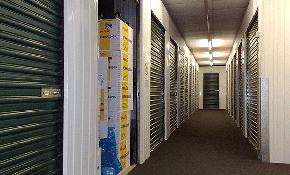(RealShare Medical Office Buildings comes to the Four Seasons in Scottsdale, AZ, November 7 -8.)
CALABASAS, CA-In the current economy, medical office has become one of the darlings of the office category—along with technology—so sourcing capital for this property type is a chief concern for investors who want a piece of the pie. “Sourcing Capital: Are We Back to a Full Recovery?”, a panel to be led by Al Pontius, SVP and managing director of Marcus & Millichap Investment Services, during the RealShare Medical Office Buildings trade conference on November 8 in Scottsdale, AZ, will tackle the capital-investment environment for MOBs from both the debt and equity sides.
Pontius tells GlobeSt.cm that the panel will explore what debt and equity investors are looking for in the MOB environment, how they are discerning where and where not to be, and what attracts them. “We’ll be looking at it both from a stabilized situation, but also how structured lender can look at value-add opportunities and put together structured, bridge-type financing that can take a property from value-add to stable condition. Then, they can replace that debt with some other type of financing and reposition the property.”
The panel will also delve into how medical-office investment compares to other asset classes, including general office, multifamily and retail. “We’re looking at the big-picture trends of the capital—what is it that our capital is pursuing, and what denotes the characteristics of the investments that are being pursued now.”
Two of the panelists, John Winer of Seavest Inc. and John Marshall of Duke Realty, are equity-investment people looking to grow their portfolio. “Through their eyes, we’ll learn how the deal flow looks. Are there more opportunities today or fewer opportunities? Why do you think that is? What’s going on in your space, and what are the challenges to your equity?”
Pontius echoes what other industry experts are saying about medical office being more stable than general office, adding that medical-office investment represents a high percentage of overall office investment. The panel will look at how investors are navigating the landscape of competitive buyers, both on- and off-campus, and how they view the space. “Are you expanding your position? How do you feel about healthcare reform initiatives that change your attitude about lending? The same questions will be answered on the debt side as well.”
Medical-office buildings operationally are outperforming general office buildings in terms of occupancy, presenting a better relationship of supply and demand on a national basis than general office, Pontius adds. “Also, the medical-office tenant roster tends to be more stable than in a general office building. There’s no question that investors are looking at medical office or defining the attractiveness around a more stable, predictable income stream. We certainly will also get into the shift in what makes a modern medical-office property today and what makes older properties obsolete.”
As GlobeSt.com reported last week, healthcare reform will bring a dramatic change in the way healthcare is delivered and to the medical-office environment, according to Gary McKitterick, a partner with local law firm Allen Matkins, who is moderating a panel titled “What Reform Means for Development, Design and Patient Care” during the conference. McKitterick told GlobeSt.com that the traditional medical-office building will soon become a thing of the past as healthcare moves to a more patient-centric delivery system that stems from hospitals and branches out into the community.

















 Copyright © 2024 ALM Global, LLC. All Rights Reserved.
Copyright © 2024 ALM Global, LLC. All Rights Reserved.